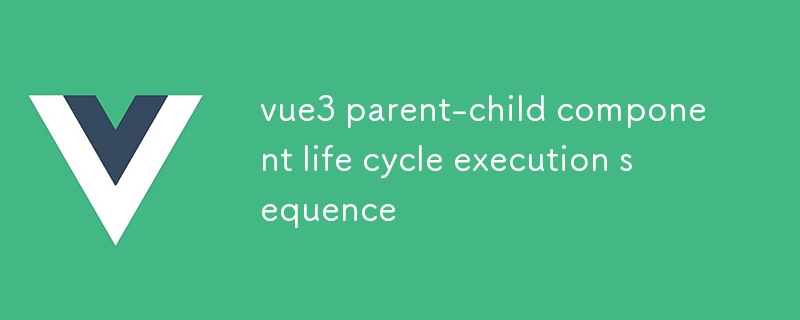Home >Web Front-end >Vue.js >vue3 parent-child component life cycle execution sequence
vue3 parent-child component life cycle execution sequence
- DDDOriginal
- 2024-08-13 15:46:181205browse
This abstract discusses the lifecycle execution order for parent-child components in Vue.js 3. It mentions that the parent component's lifecycle hooks execute before the child component's lifecycle hooks. The article also provides a solution to ensur

What is the lifecycle execution order of parent-child components in Vue.js 3?
In Vue.js 3, the lifecycle execution order for parent-child components is as follows:
- BeforeCreate (parent)
- Created (parent)
- BeforeCreate (child)
- Created (child)
- BeforeMount (parent)
- BeforeMount (child)
- Mounted (parent)
- Mounted (child)
- BeforeUpdate (parent)
- BeforeUpdate (child)
- Updated (parent)
- Updated (child)
- BeforeUnmount (parent)
- BeforeUnmount (child)
- Unmounted (parent)
- Unmounted (child)
When do child components receive the 'created' lifecycle hook in relation to parent components in Vue.js 3?
Child components receive the 'created' lifecycle hook after the parent component has received it. This is because the parent component's lifecycle hooks execute before the child component's lifecycle hooks.
How can you ensure that the 'mounted' lifecycle hook is executed in a consistent order for both parent and child components in Vue.js 3?
You can ensure that the 'mounted' lifecycle hook is executed in a consistent order for both parent and child components by using the nextTick function. This function schedules a callback to be executed after the current event loop has finished, ensuring that both parent and child components have been mounted before the callback is executed.
For example:
<code>mounted() {
this.$nextTick(() => {
// Code that should be executed after both parent and child components have been mounted
});
}</code>The above is the detailed content of vue3 parent-child component life cycle execution sequence. For more information, please follow other related articles on the PHP Chinese website!
Related articles
See more- About vue using validator: VeeValidate3
- What are the differences between computed and method in Vue?
- Introduction to the method of turning off Eslint verification in the vue project
- Introduction to several methods of defining component templates in Vue.js
- Four places to implement AJAX in Vue applications

